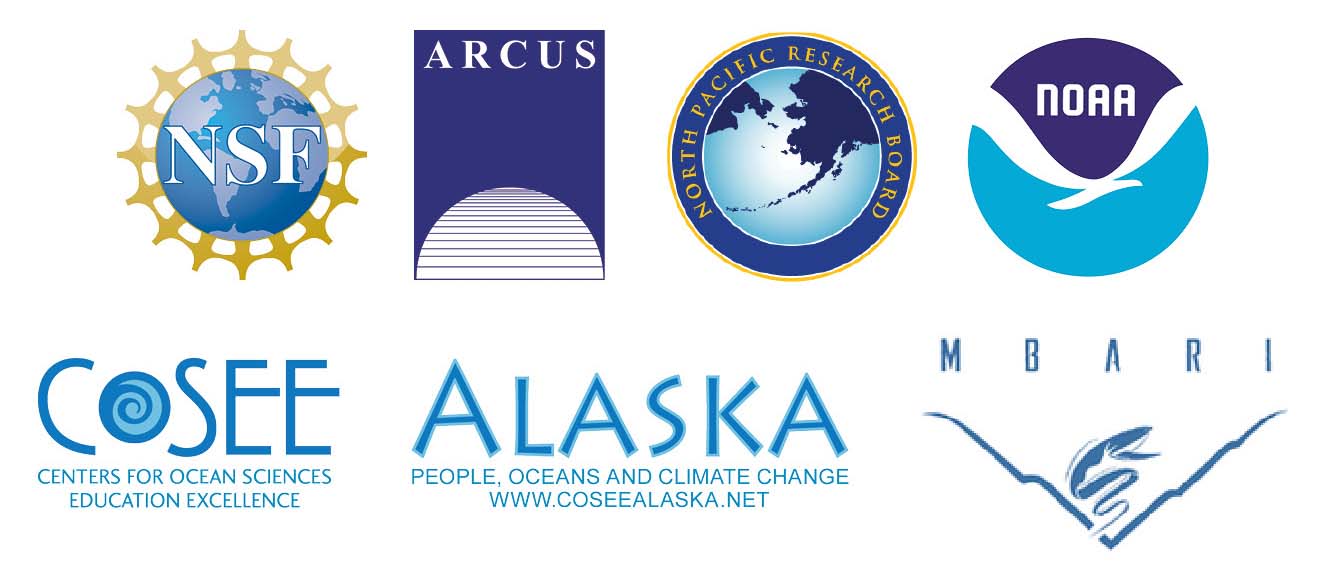Introducing the Bering Sea Collection, a body of educational resources focused on understanding the impacts of climate change and dynamic sea ice cover on the eastern Bering Sea ecosystem. The Collection was developed during a four day workshop that brought together teachers who had traveled to the Bering Sea during teacher researcher experience programs; Bering Sea community teachers from St. Paul, Emmonak, and Nome; as well as project scientists interested in gaining expertise in broader impacts activities.
The Bering Sea Collection uses BEST-BSIERP hypotheses and focal areas as a guide. Both the Bering Ecosystem Study (BEST) and the Bering Sea Integrated Ecosystem Research Program (BSIERP), programs seek to support meritorious scientific research that will improve understanding of how the highly productive marine ecosystem of the Bering Sea may respond to climate change, particularly as mediated through changes in sea ice cover. The Collection includes individual activities, lesson plans, videos, and presentations all that will educate the next generation about this complex ecosystem study.

The Bering Sea Collection and the Bering Sea Ecosystem Professional Development Workshop, which led to creation of the collection, were funded by Arctic Research Consortium of the United States, National Science Foundation Office of Polar Programs, North Pacific Research Board, COSEE Alaska, Monteray Bay Aquarium Research Institute, and NOAA Teachers at Sea Program.
